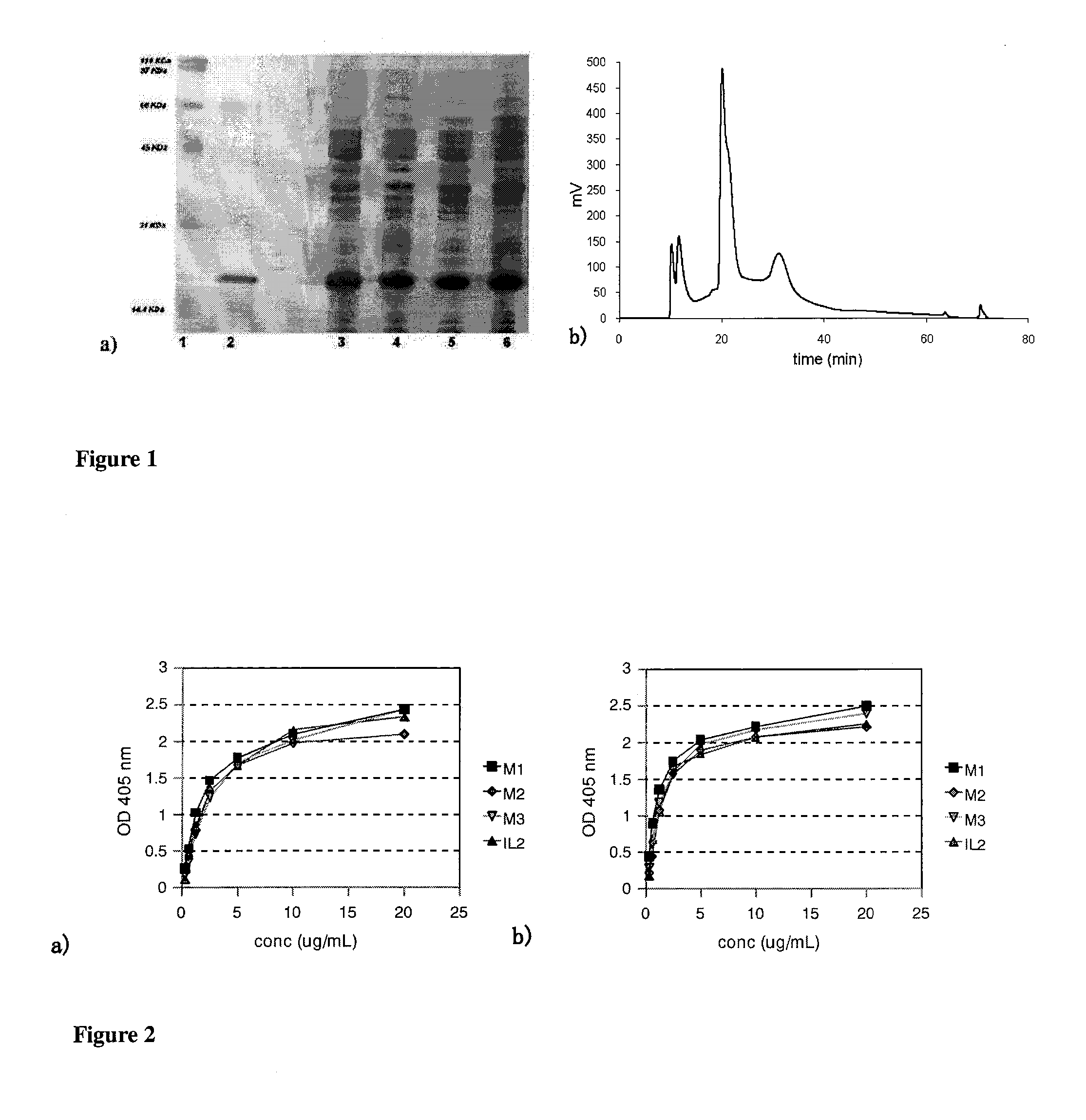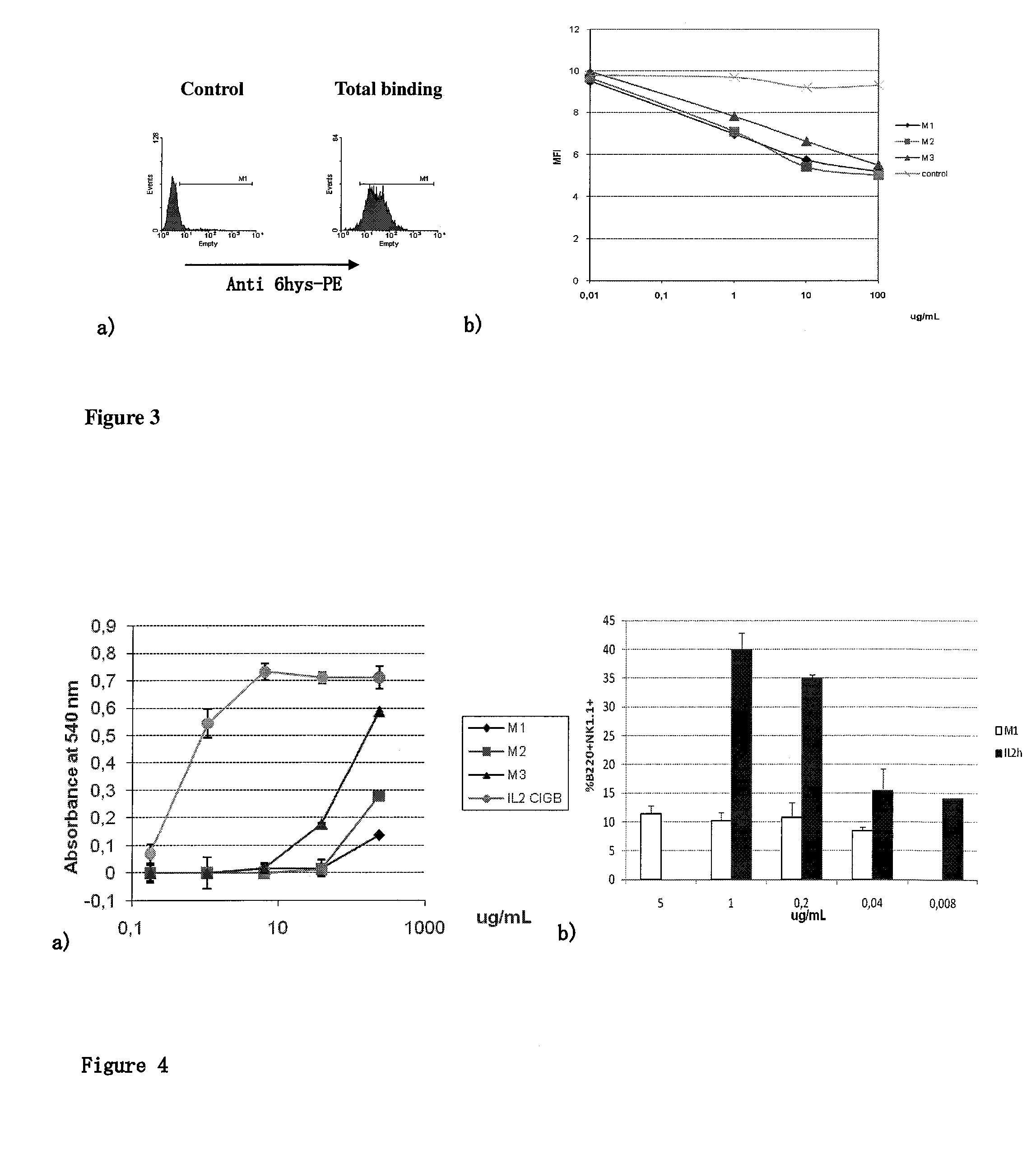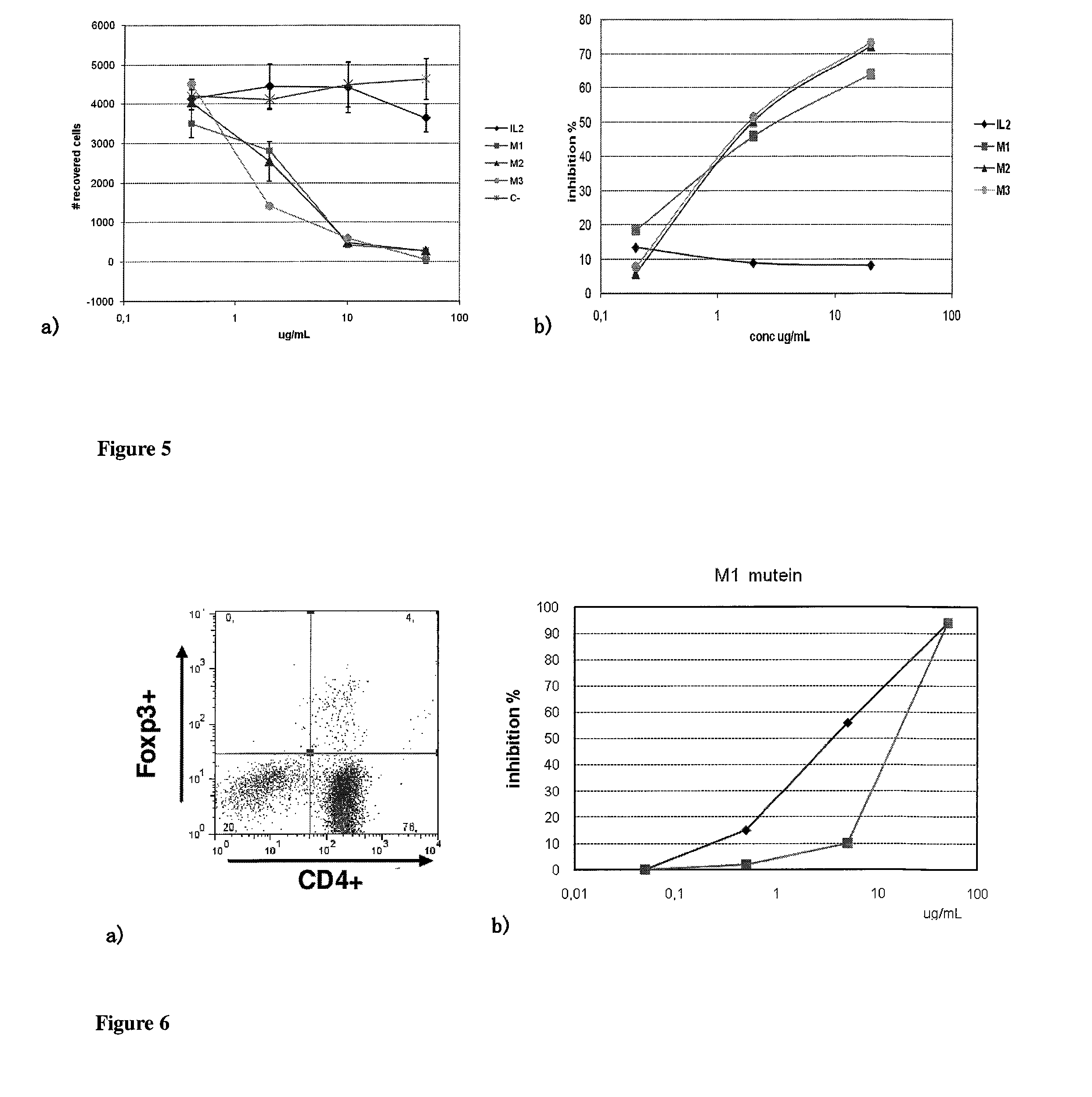Immunomodulatory interleukin-2 polypeptides and methods of treating melanoma
a technology of immunomodulatory interleukin-2 and polypeptides, which is applied in the direction of peptide/protein ingredients, immunological disorders, drug compositions, etc., can solve problems such as complexity for larger molecules such as antibodies and others
- Summary
- Abstract
- Description
- Claims
- Application Information
AI Technical Summary
Benefits of technology
Problems solved by technology
Method used
Image
Examples
example 1
[0035]The mutants were designed computationally, from bioinformatics techniques, using as basis the reported structure of the quaternary complex of human IL-2 coupled to the receptor in line the report by Wang, X., Rickert, M. and Garcia, K. C. in Structure of the quaternary complex of interleukin-2 with its alpha, beta, and gamma receptors. Science, 2005. 310(5751): p. 1159-63 and energy calculation algorithms for the protein-ligand interaction in the public domain. Different variants of muteins were initially predicted to not affect the binding capacity of the alpha and beta chains of the receptor. These muteins were expressed in E. coli from a genetical construction in the pET28a vector including an identifying sequence of 6 histidines at the amino terminal. The muteins were purified using reverse phase (FIG. 1) obtaining with high purity (>95%). The muteins obtained were selected according to their properties in in-vitro experimental trials. Among the muteins constructed in Tabl...
example 2
[0036]The selected muteins retain the ability to bind to different components of the IL2 receptor, especially to the alpha and beta chains of the receptor. FIG. 2 shows that using ELISA tests several of the mutants specified in Table 1 maintain virtually intact its ability to bind to the alpha chain (FIG. 2) and the beta chain (FIG. 2b) of the IL-2 human receptor. FIG. 3 shows further confirmation that these mutants bind to the receptor on the cell surface (FIG. 3a) and that this union can be displaced gradually by the addition of native IL-2 (FIG. 3b).
example 3
[0037]The selected muteins significantly reduce their ability to signal by the IL-2 receptor. FIG. 3 illustrates this fact by measuring their capacity to stimulate the growth of the CTLL2 cell line (FIG. 4a) or stimulate the differentiation of NK cells from total spleen lymphocytes (FIG. 4b). These muteins in high concentrations inhibit the activity of native IL-2, both on T lymphocytes (FIG. 5a) and on NK cells (FIG. 5b).
PUM
| Property | Measurement | Unit |
|---|---|---|
| concentrations | aaaaa | aaaaa |
| concentrations | aaaaa | aaaaa |
| concentrations | aaaaa | aaaaa |
Abstract
Description
Claims
Application Information
 Login to View More
Login to View More - R&D
- Intellectual Property
- Life Sciences
- Materials
- Tech Scout
- Unparalleled Data Quality
- Higher Quality Content
- 60% Fewer Hallucinations
Browse by: Latest US Patents, China's latest patents, Technical Efficacy Thesaurus, Application Domain, Technology Topic, Popular Technical Reports.
© 2025 PatSnap. All rights reserved.Legal|Privacy policy|Modern Slavery Act Transparency Statement|Sitemap|About US| Contact US: help@patsnap.com



